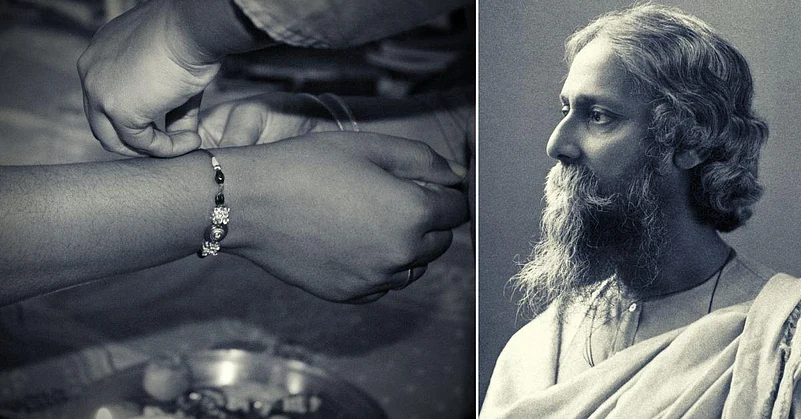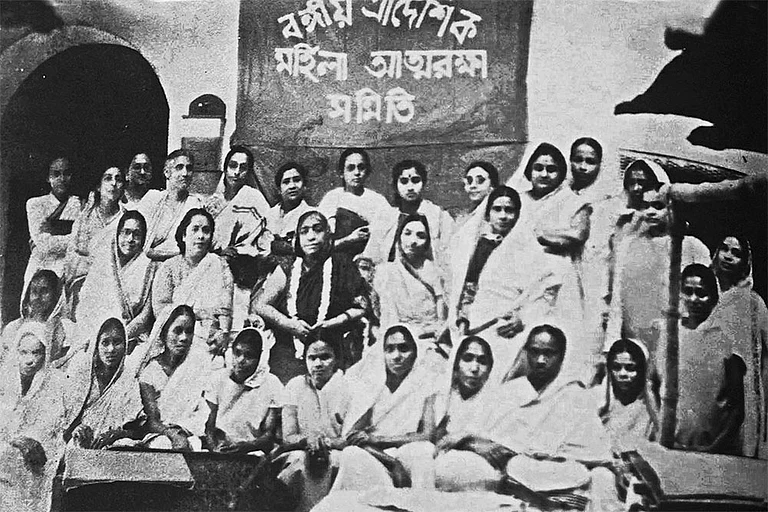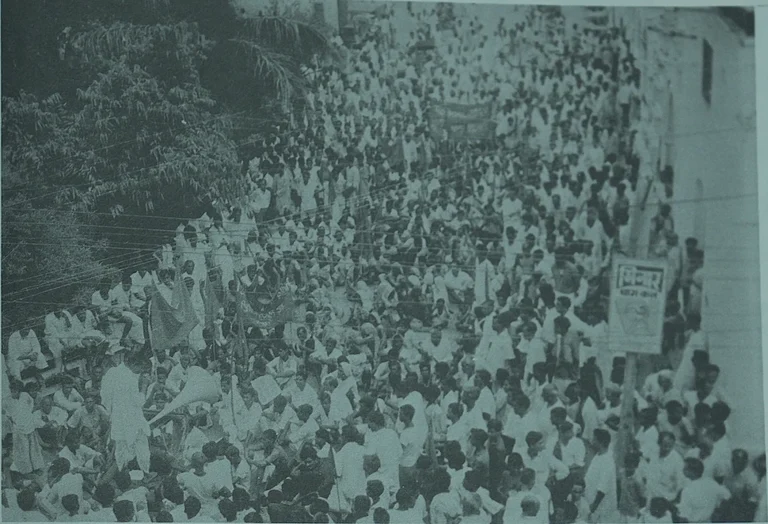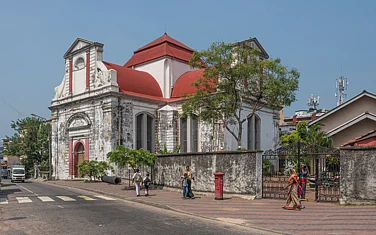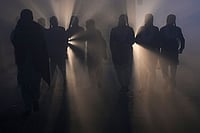Raksha Bandhan has long been celebrated as a sacred bond between siblings. On this day, sisters tie a thread called a rakhi on their brothers’ wrists, symbolizing protection, love, and care. It is a heartfelt gesture rooted in Indian tradition, where the bond of family takes center stage. But in the year 1905, this simple festival took on a deeper meaning when Rabindranath Tagore, a Nobel Laureate and one of India’s greatest thinkers, turned it into a powerful symbol of unity and national solidarity. This idea of using the festival to show community-wide appreciation continues today with movements like Rakhi For The Nation 2025, where citizens tie rakhis to police, soldiers & sanitation workers in tribute.
The Background: Partition of Bengal, 1905
In 1905, the British colonial government made a decision that deeply shook India. Lord Curzon, the then Viceroy of India, announced the partition of Bengal. The official explanation was that Bengal was too large to govern efficiently. However, the real motive behind the move was to divide the population on religious lines. The British planned to split Bengal into two parts. The western region, which had a Hindu majority, would be separated from the eastern region, which had a Muslim majority.
This move was seen by many as a classic example of the British policy of divide and rule. It aimed to create tension between Hindus and Muslims, weaken the growing nationalist movement, and maintain control over the Indian population. The new arrangement came into effect on October 16, 1905, a day that fell in the month of Shravan, which is when the festival of Raksha Bandhan is traditionally celebrated by Hindus.
Tagore’s Reimagining of Raksha Bandhan
Rabindranath Tagore saw the political and emotional impact this partition could have on the people. He feared that the division of Bengal would not just separate land, but also break the unity of its communities. Instead of responding with anger or violence, he chose a more creative and symbolic form of protest. Tagore decided to give Raksha Bandhan a new meaning.
He urged people across Bengal, regardless of their religion, to celebrate Raksha Bandhan not just as a festival between brothers and sisters but as a public act of unity. He encouraged Hindus and Muslims to tie rakhis on each other’s wrists. The thread became a symbol of mutual protection, trust, and brotherhood. It was no longer just about family. It became a message that all Indians stood together, rejecting the divisions that the British tried to create.
This act was both emotional and powerful. In cities like Kolkata, Dhaka, and Sylhet, people from different communities came together to tie rakhis. Public gatherings were held, and cultural programs and processions filled the streets with music, poetry, and the spirit of togetherness. Tagore himself wrote songs and poems for the occasion, reminding people of their shared heritage and the strength of unity.
A Peaceful Movement of Resistance
The Raksha Bandhan movement led by Tagore was unique. It was not based on violence or confrontation. Instead, it was built on emotion, culture, and shared values. It reached ordinary people who may not have been involved in political activism but felt deeply connected to the idea of unity and brotherhood.
Through this movement, Tagore showed that even a simple festival could be turned into a powerful symbol of resistance. He proved that cultural traditions could be used to bring people together and inspire change. His peaceful approach left a strong impression on the freedom movement and inspired many to think beyond religious or regional differences.
The Impact and the Years After
The protests against the partition of Bengal continued for several years. Eventually, due to constant pressure and widespread resistance, the British government reversed the partition in 1911. Although this victory was significant, the deeper unity that Tagore hoped for did not last forever. In 1947, India faced the tragic partition that created deep wounds and led to the creation of two separate nations, India and Pakistan.
Yet, even though Tagore’s dream of a united India was not fully realized, his Raksha Bandhan movement left behind a powerful message. It showed that festivals are not just about rituals, but also about shared values. It reminded us that unity, respect, and compassion are essential in building a strong and peaceful society.
Conclusion: A Message That Still Matters
Today, as we celebrate Raksha Bandhan, the memory of Tagore’s movement reminds us of what the festival can truly represent. Beyond the ties between siblings, it can also be about standing together as a society. It can be about protecting each other, not just within families, but also across communities, regions, and faiths.
Rabindranath Tagore’s Raksha Bandhan movement in 1905 was more than a protest. It was a creative, peaceful, and deeply human response to injustice. It showed the world that unity does not always come from political speeches or violent struggles. Sometimes, it begins with a simple thread tied with love and respect







